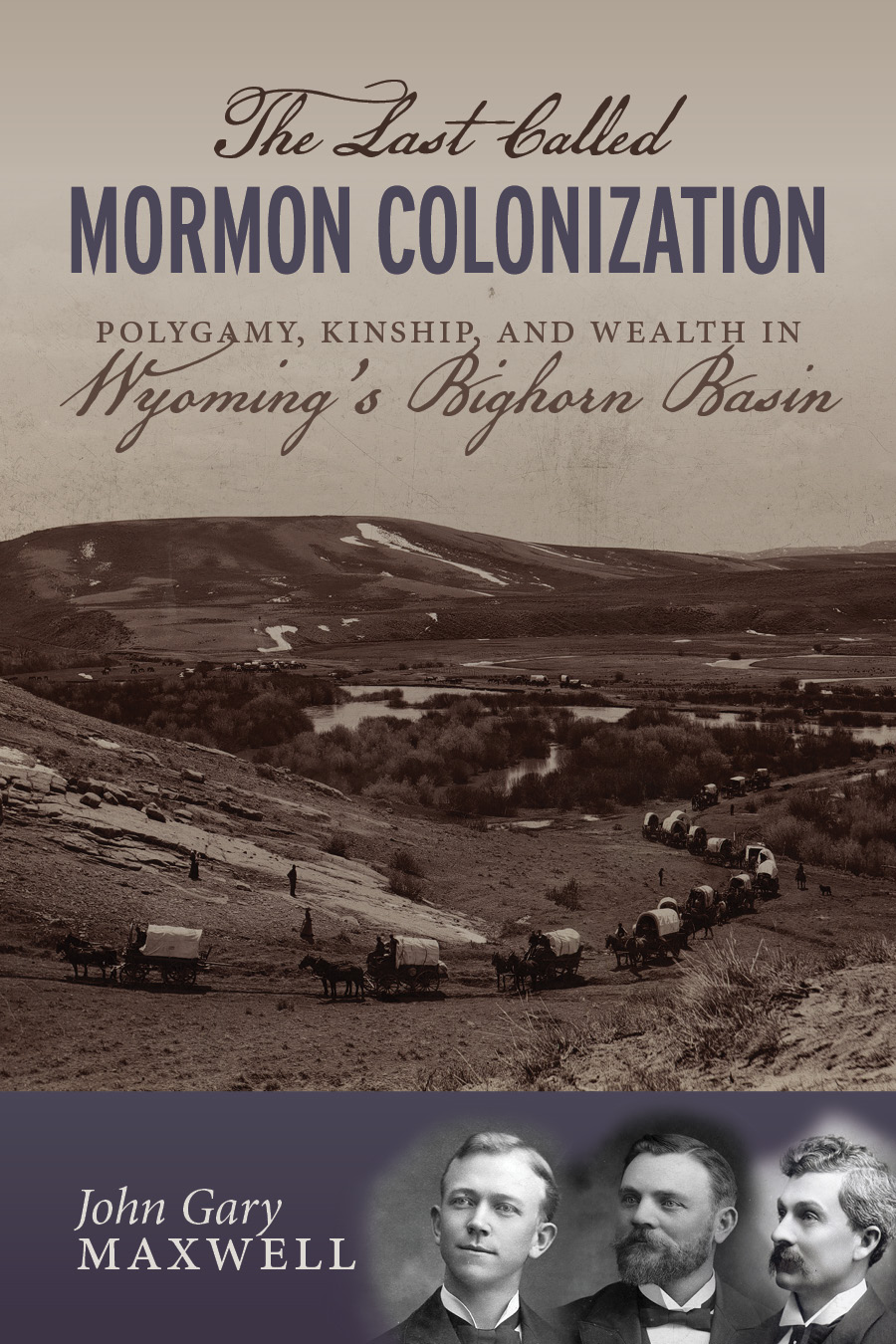
Title: The Last Called Mormon Colonization: Polygamy, Kinship, and Wealth in Wyoming’s Bighorn Basin
Author: John Gary Maxwell
Publisher: University of Utah Press
Genre: Religious Non-Fiction
Year Published: 2022
Number of Pages: 251
Binding: Paperback
ISBN: 9781647690595
Price: $29.95
Reviewed by Conor Hilton for the Association for Mormon Letters
The Last Called Mormon Colonization: Polygamy, Kinship, and Wealth in Wyoming’s Bighorn Basin by John Gary Maxwell is a detail-oriented book. The text is chockfull of numerous details relating to the Mormon colonization efforts in the Big Horn Basin. These details are often fascinating and almost certainly worthy of more attention from other scholars and interested folks. Yet, this detail-oriented approach occasionally makes it difficult to see the bigger picture that Maxwell is painting.
Some of this difficulty is tied to the structure of the book, with chapters that are more thematic in their organization. Because of this the historical narrative of the colonization efforts was difficult for me to follow. After finishing the book, I still had a hard time articulating the chronology and main points of these colonization efforts (Maxwell does include a detailed “Chronology” in the back, which could be a helpful resource to consult as you read to potentially alleviate some of the difficulty that I had in placing the small details in each chapter in the context of the big picture story).
Another piece of the difficulty is the appropriately tentative conclusion that Maxwell comes to about the role of polygamy in the Big Horn Basin colonization efforts. In the book’s final chapter, Maxwell writes:
Was a future site for disguised polygamy the secret motivation behind the highest of LDS leaders to call hundreds to leave more mature counties and situations to start over in the Big Horn Basin’s frontier? The personal, historical records by Charles Welch, Mark N. Partridge, and Melvin M. Fillerup give no hint or suspicion that Owen Woodruff shared such a secret charge….Whether this last colonization by Latter-day Saints to the isolated area of Wyoming is another expression of an adamantine refusal to abandon plural marriage remains a conundrum. (178)
Throughout the book, Maxwell digs into the post-manifesto polygamy of many of the key figures in organizing the Big Horn Basin colonization. There’s much to appreciate and learn from the information that Maxwell highlights in these passages, particularly for those interested in some of the details of post-Manifesto polygamy. While these sections of the book offer valuable context for the colonization in the Big Horn Basin, they do not prove, as Maxwell notes, that the colonization was intended to keep polygamy alive in secret.
In addition to sketching out some of the realities of post-Manifesto polygamy, the book is quite attentive to the economic situation of these Mormon colonizers. The economic details often involve a variety of political figures, as well as none other than William F. “Buffalo Bill” Cody. The work that Maxwell does here will likely be of interest to those curious about the economic realities of late-nineteenth- and early-twentieth-century life on the Western frontier. The connection to Cody may also spark some interest.
The Last Called Mormon Colonization is best for the more serious historians and students of history, and may disappoint those wanting an accessible, narrative telling of the “Last Called Mormon Colonization”. The detail-oriented nature of Maxwell’s prose makes the book rich for mining specific insights and facts about the Big Horn Basin, the surrounding Wyoming context, and post-Manifesto polygamy. Especially as it relates to Abraham Owen Woodruff, Marriner Merrill, and disgraced apostles Matthias Cowley, John W. Taylor. As a part of a series of 13 tables, Maxwell includes the details of the Post-Manifesto marriages performed by each of these four men. These and the other tables and included history could be very helpful for polygamy researchers. I will be thinking about the ways that Maxwell describes the difficulties these early colonizing Saints faced and how political, commercial, and theological endeavors were intertwined for them. The Last Called Mormon Colonization: Polygamy, Kinship, and Wealth in Wyoming’s Bighorn Basin offers a treasure trove of details about the nitty-gritty of this particular turn-of-the-century colonization effort–you just might need to do a bit of digging to find them.
